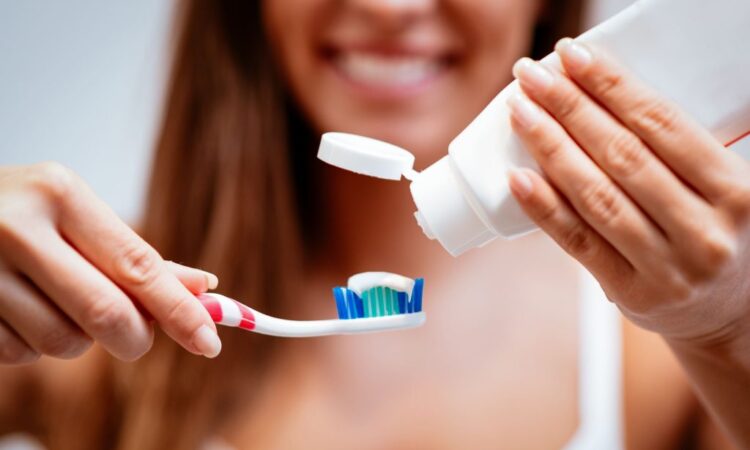
Brushing teeth makes your smile one of your most valuable assets, and maintaining it starts with selecting the perfect toothbrush. With a plethora of options available on the market, finding the ideal toothbrush tailored to your unique needs might seem overwhelming. That’s where we come in.
We will delve into the importance of proper toothbrush selection and offer practical advice on making the right choice. Your toothbrush plays a pivotal role in your daily oral care routine, and understanding the factors that influence your decision can significantly impact your overall oral health.
From manual to electric, soft bristles to extra clean, we will explore the diverse range of toothbrush options, helping you make an informed decision that aligns with your dental needs, preferences, and environmental concerns.
The research
Mastering the Proper Teeth-Brushing Technique
A beautiful smile starts with the basics, and the foundation of oral care is mastering the proper teeth-brushing technique. In this chapter, we will walk you through the essential steps to ensure you’re brushing your teeth and gums effectively.
- Five Steps to Brush the Teeth and Gums Effectively: We’ll break down the tooth-brushing process into five simple yet crucial steps. From the angle of your toothbrush to the right motions, we’ll guide you through every detail to make sure you’re getting the most out of your brushing routine.
- Brushing the Outer Surfaces of the Teeth: Discover the correct way to clean the outer surfaces of your teeth, where plaque and food particles tend to accumulate. We’ll explain why this step is essential for maintaining a healthy smile.
- Brushing Against the Gumline at a 45° Angle: The gumline is a critical area in oral care. Learn the proper technique for brushing against the gumline at a precise 45° angle to prevent gum disease and maintain healthy gums.
- Brushing the Inner Surfaces of the Teeth: Don’t overlook the inner surfaces of your teeth! We’ll show you how to effectively clean these often-neglected areas.
- Brushing the Chewing Surfaces of the Teeth: Chewing surfaces have their own unique cleaning requirements. We’ll teach you how to tackle these surfaces efficiently.
- Brushing the Tongue: Your tongue is not only essential for taste but also plays a role in your oral health. Discover why cleaning your tongue is an important part of the brushing process.
Teeth-Brushing Tips
Now that you’ve mastered the proper teeth-brushing technique, it’s time to delve deeper into maintaining optimal oral health. In this chapter, we provide valuable tips and answers to common questions about brushing, helping you fine-tune your oral care routine.
- How Long and How Often to Brush: Discover the ideal duration for each brushing session and how frequently you should brush your teeth. We’ll shed light on the best practices for maintaining a consistently healthy smile.
- Choosing the Right Toothbrush: Not all toothbrushes are created equal. We’ll help you navigate the options, whether you prefer manual or electric brushes. Learn what to look for in a toothbrush and how to select the one that suits you best.
- Selecting the Perfect Toothpaste: With countless toothpaste varieties available, it’s essential to pick the one that aligns with your dental needs. We’ll guide you through the considerations and ingredients to look for in toothpaste.
- Avoiding Overbrushing and Toothbrush Wear: Did you know that brushing too vigorously can harm your teeth and gums? We’ll provide tips on how to avoid overbrushing and how to extend the lifespan of your toothbrush.
- When to Replace Your Toothbrush: Toothbrushes wear out over time, diminishing their effectiveness. Learn when it’s time to bid farewell to your old toothbrush and how to choose a replacement.
Uncovering the Benefits of Brushing
Brushing your teeth is more than just a daily ritual; it’s a cornerstone of good oral hygiene. In this chapter, we’ll delve into the numerous benefits of proper brushing and why it’s essential for maintaining a healthy mouth.
- Plaque and Bacteria Removal: Discover how brushing helps remove harmful plaque and bacteria from the surfaces of your teeth. We’ll explain the significance of these microorganisms and their role in dental problems.
- Cavity Prevention: Learn how consistent brushing can prevent cavities, one of the most common dental issues. We’ll delve into the science behind cavity formation and how your toothbrush becomes your primary defense.
- Guarding Against Tooth Decay: Tooth decay can lead to severe dental problems if left unchecked. Find out how regular brushing can help you avoid this painful and costly condition.
- Fighting Periodontal Disease: Periodontal disease affects the gums and the supporting bone structure of the teeth. We’ll explore how your toothbrush plays a crucial role in preventing this condition and its associated complications.
- The Role of Flossing: While brushing is essential, it’s not the entire story. We’ll emphasize the importance of flossing as a complementary practice for optimal oral health.
- Regular Dental Visits: We’ll stress the significance of regular dental check-ups and cleanings in conjunction with your brushing routine. These visits are essential for catching dental issues early and maintaining a beautiful smile.
How to Choose the Perfect Toothbrush
Selecting the right toothbrush can make a world of difference in your oral care routine. In this chapter, we’ll guide you through the process of choosing the perfect toothbrush tailored to your unique needs and preferences.
- Manual vs. Electric: We’ll discuss the pros and cons of manual and electric toothbrushes. Discover which type aligns best with your brushing style and goals.
- ADA Seal of Acceptance: Learn about the American Dental Association’s Seal of Acceptance and why it’s essential to look for this endorsement when shopping for a toothbrush.
- Type of Bristles: Different toothbrushes come with various bristle options. We’ll help you understand the differences between soft, medium, and hard bristles and which is right for you.
- Size of Toothbrush Head: The size of the toothbrush head can affect your brushing precision. Find out how to choose the appropriate head size for your mouth.
- Type of Brush Handle: Explore different types of brush handles and grips. We’ll discuss ergonomics and why a comfortable handle can enhance your brushing experience.
- Color and Design: While not the most critical factor, the color and design of your toothbrush can still play a role in your overall satisfaction. We’ll provide tips for choosing a toothbrush that resonates with you.
- How to Dispose of a Toothbrush: Learn how to dispose of your old toothbrushes responsibly and explore options for recycling or reusing them.
- When to Replace Your Toothbrush: We’ll clarify how often you should replace your toothbrush or toothbrush head to ensure effective cleaning.
Toothbrush Recommendations and Reviews
Now that you’re well-versed in how to choose the ideal toothbrush, it’s time to explore some top-notch recommendations that align with various preferences and needs. In this chapter, we’ll provide comprehensive reviews of a selection of toothbrushes that have earned their place in the spotlight.
- Best Overall: GUM Technique Deep Clean Toothbrush: Discover why the GUM Technique Deep Clean Toothbrush stands out with its professional-grade cleaning power, uniquely angled handle, finely tapered bristles, and comfortable grip.
- Best Electric: Oral-B Genius 9600 Electric Toothbrush: Dive into the world of electric toothbrushes with the Oral-B Genius 9600. We’ll explore its six brushing modes, pressure sensor, interchangeable brush heads, intelligent app, and convenient USB charging case.
- Best Budget: Colgate Extra Clean Full Head Toothbrush: For those seeking a wallet-friendly option, we’ll review the Colgate Extra Clean Full Head Toothbrush, highlighting its circular power bristles, gripped handle, tongue scraper, and ergonomic design.
- Best Sonic: Philips Sonicare ProtectiveClean 4100 Electric Toothbrush: Discover the advantages of ultrasound technology with the Philips Sonicare ProtectiveClean 4100. We’ll delve into its pressure sensors, brush head replacement reminder, smart timer, and waterproof design.
- Best for Sensitive Teeth: Sensodyne Pronamel Medium Toothbrush: If you have sensitive teeth, this review is for you. Learn about the Sensodyne Pronamel Medium Toothbrush with its ergonomic handle, solid grip, Duoflex brush neck, soft bristles, and pressure control.
- Best Soft Bristle: Oral-B Pro Health All In One Soft Toothbrush: Explore the benefits of soft bristles with the Oral-B Pro Health All In One Soft Toothbrush, featuring Cross Action bristles, a tongue cleaner, gum stimulator, grippy handle, and gentle cleaning action.
- Best Eco-Friendly: Tom’s of Maine Naturally Clean Toothbrush: If you’re environmentally conscious, this review is a must-read. We’ll delve into the Tom’s of Maine Naturally Clean Toothbrush, known for its natural and recyclable materials, multi-height bristles, angled brush neck, grippy handle, and eco-friendly design.
- Best Extra Soft: Nimbus Extra Soft Toothbrush: For an extra gentle clean, explore the Nimbus Extra Soft Toothbrush with its microfine and tapered bristles, ergonomic handle, BPA-free material, and water retention properties.
- Best Antibacterial: Dr. Collins Perio Toothbrush: Dive into the world of antibacterial toothbrushes with a review of the Dr. Collins Perio Toothbrush. We’ll explore its tea tree oil and magnolia bark infusion, non-slip thumb grip, polyester bristles, and simplicity.
Additionally, we’ll touch on other products we tested that didn’t quite make the cut and explain why.
Other Products We Tested
While we’ve highlighted some fantastic toothbrush options in the previous chapter, not every product we examined made it to the top of the list. In this chapter, we’ll briefly discuss a few other toothbrushes we tested, shedding light on why they didn’t make our top recommendations.
- MOON Toothbrushes – Soft Bristle: Explore why the MOON Toothbrushes with soft bristles fell short. We’ll discuss its stiff brush head design, which might make it difficult to achieve a deep clean.
- Brush by Bite: Delve into the eco-friendly aspects of the Brush by Bite toothbrush, featuring bamboo bristles that are gentle on the environment. However, we’ll also address its potential downsides, such as its awkwardly shaped handle.
- Colgate 360° Advanced Optic White Toothbrush: Understand the unique design of the Colgate 360° Advanced Optic White Toothbrush, which is intended to clean all surfaces of your teeth simultaneously. We’ll share why it didn’t quite impress us in terms of overall function and comfort.
By exploring these additional products we tested, you’ll gain a comprehensive view of the toothbrush landscape, helping you make an even more informed choice for your oral care routine.
Here is a chart showing the statistic use of all types of toothbrushes based on the web search results:
| Type of toothbrush | U.S. usage in 2020 (%) | U.K. usage in 2020 (%) | Environmental impact (kg CO2 eq.) | Human health impact (DALY) |
|---|---|---|---|---|
| Manual | N/A | 77.1 | 0.13 | 0.000001 |
| Electric | N/A | 22.9 | 1.16 | 0.000006 |
| Oscillating/rotating | 35.9 | N/A | N/A | N/A |
| Sonic | 28.4 | N/A | N/A | N/A |
| Other power | 35.7 | N/A | N/A | N/A |
| Bamboo | N/A | N/A | 0.08 | 0.000001 |
| Plastic with replaceable head | N/A | N/A | 0.14 | 0.000001 |
Our Testing Methodology
In this chapter, we’ll pull back the curtain and reveal the rigorous methodology we employed to evaluate and rank the toothbrushes featured in this guide. We understand that choosing the right toothbrush is crucial for your oral health, and we want you to have complete confidence in our recommendations. Here’s what you can expect:
- Criteria for Evaluation: We’ll outline the specific criteria we used to assess each toothbrush. These criteria include comfort, ease of use, functionality, quality, design, bristle effectiveness, and any added features.
- Real-World Testing: Learn how we put these toothbrushes to the test in real-world scenarios. From daily brushing routines to more intensive trials, we spared no effort to ensure our evaluations were comprehensive and thorough.
- Quality Control: Discover the measures we took to ensure that the toothbrushes we tested met the highest quality standards. Quality control is essential when it comes to oral care, and we’ll explain our rigorous checks.
- User Feedback: We’ll touch on how user feedback played a role in our evaluations. Your experiences matter, and we considered the experiences of real users when forming our recommendations.
- Comparative Analysis: Gain insights into our side-by-side comparisons of different toothbrush models. We’ll walk you through how each toothbrush performed relative to others in the same category.
Frequently Asked Questions
In this chapter, we’ll address some of the most common questions and concerns that people have when it comes to toothbrushes and oral care. We understand that making the right choices for your oral health can be complex, and we’re here to provide clarity. Here’s what you can expect:
How Often Should I Change My Toothbrush?:
One of the common questions when it comes to toothbrush maintenance is, “How often should I change my toothbrush?” The answer to this question is crucial for maintaining good oral hygiene. Let’s delve into this topic in detail.
Maintaining your oral health not only involves proper brushing techniques and choosing the right toothbrush, but also knowing when it’s time to replace your toothbrush. Your toothbrush is your trusted tool for fighting plaque and bacteria and maintaining healthy teeth and gums. However, over time, the effectiveness of your toothbrush can diminish.
The General Rule: Every 3 to 4 Months
Dentists and oral health experts typically recommend changing your toothbrush or toothbrush head every 3 to 4 months. This time frame ensures that your toothbrush remains in optimal condition, with bristles that effectively clean your teeth and gums. After this period, bristles can become frayed, worn, or less effective at removing plaque and debris.
Signs It’s Time for a Replacement
While the 3 to 4-month guideline is a good rule of thumb, there are instances when you might need to replace your toothbrush sooner. Pay attention to the following signs:
- Bristle Wear: Examine the bristles regularly. If they appear frayed, splayed, or flattened, it’s time for a replacement.
- Illness: If you’ve been sick, particularly with a contagious illness like the flu or a cold, replace your toothbrush once you recover to prevent re-infection.
- After Dental Work: If you’ve had dental surgery or any oral procedure, replace your toothbrush to prevent the introduction of harmful bacteria into your healing mouth.
- Storage Issues: If your toothbrush is stored in a closed container or in a moist environment, it can become a breeding ground for bacteria. Replace it if you notice signs of mold or mildew.
- Sharing Toothbrushes: Never share your toothbrush with others. If someone else uses your toothbrush, replace it immediately.
- Dental Check-ups: Consider changing your toothbrush after your regular dental check-ups as a way to start fresh and maintain optimal oral health.
Electric Toothbrush Heads
If you use an electric toothbrush, the same rules apply. Replace the toothbrush head every 3 to 4 months or as recommended by the manufacturer. Most electric toothbrushes have indicator bristles that fade with use, signaling when it’s time for a replacement.
Environmental Considerations
Concerned about the environmental impact of replacing your toothbrush every few months? Look for toothbrushes with eco-friendly features. Some toothbrushes have replaceable heads, reducing the waste generated, while others are made from sustainable materials.
Conclusion
Maintaining proper oral hygiene includes not only brushing with the right technique but also knowing when to replace your toothbrush. By following the general guideline of changing your toothbrush every 3 to 4 months and paying attention to signs of wear, you can ensure that your toothbrush continues to be an effective tool in your quest for excellent oral health.
Remember, your toothbrush is your ally in the fight against plaque, cavities, and gum disease. By keeping it in top condition, you’re taking a proactive step towards a healthier smile and overall well-being.
Manual or Electric: Which Is Better?
Choosing the right toothbrush is essential for maintaining good oral health. One of the key decisions you’ll face is whether to use a manual or an electric toothbrush. In this chapter, we’ll explore the pros and cons of each to help you make an informed decision.
Manual Toothbrush: Simple and Effective
Pros:
- Affordability: Manual toothbrushes are widely available and are typically more affordable than their electric counterparts.
- Portability: They are easy to carry while traveling, requiring no charging or extra accessories.
- Ease of Use: Manual toothbrushes are straightforward to use and are suitable for people of all ages.
- No Noise: They operate silently, making them a good choice for those who prefer a quiet brushing experience.
Cons:
- Manual Effort: Effective brushing requires proper technique and manual effort, which can be tiring for some individuals.
- Inconsistent Brushing: People may not brush for the recommended two minutes or apply enough pressure consistently.
Electric Toothbrush: Powered Cleaning
Pros:
- Efficient Cleaning: Electric toothbrushes often have oscillating or vibrating brush heads, which can provide a more thorough cleaning action than manual brushing.
- Built-in Timers: Many electric toothbrushes include timers to ensure you brush for the recommended two minutes.
- Pressure Sensors: Some models have pressure sensors to alert you when you’re brushing too hard, helping to prevent enamel damage.
- Ease of Use: Electric toothbrushes do much of the brushing work for you, making them suitable for people with limited dexterity.
Cons:
- Cost: Electric toothbrushes are an initial investment and require periodic replacement of brush heads.
- Charging: They need to be charged regularly, which can be inconvenient if you forget to charge it or don’t have access to electricity while traveling.
- Noise: Electric toothbrushes can produce a humming or vibrating sound, which may be bothersome to some users.
Choosing the Right One for You
Ultimately, the choice between a manual and an electric toothbrush depends on your individual preferences and needs. Consider the following factors when making your decision:
- Budget: Manual toothbrushes are cost-effective, while electric toothbrushes come with a higher upfront cost.
- Oral Health Needs: If you have specific oral health issues, such as arthritis or difficulty reaching all areas of your mouth, an electric toothbrush might be more beneficial.
- Convenience: Electric toothbrushes offer features like timers and pressure sensors that can help improve your brushing technique.
- Personal Preference: Some people simply prefer the feel and control of a manual toothbrush, while others appreciate the automation of an electric one.
- Travel: Consider your lifestyle and whether you need a toothbrush that’s easy to travel with.
Conclusion
Both manual and electric toothbrushes can be effective tools for maintaining good oral hygiene. The key is to use your chosen toothbrush correctly and consistently. Whether you opt for the simplicity of a manual toothbrush or the powered cleaning of an electric one, the most important thing is to brush for two minutes, twice a day, and complement your routine with regular dental check-ups and flossing for a bright and healthy smile.
Can I clean my tongue with a toothbrush?
Your oral hygiene routine should include more than just brushing your teeth. Cleaning your tongue is an essential part of maintaining fresh breath and overall oral health. In this chapter, we’ll explore whether you can effectively clean your tongue with a toothbrush and the importance of doing so.
The Importance of Tongue Cleaning
Before delving into the “how,” let’s understand the “why” behind tongue cleaning. The surface of your tongue is not smooth; it’s covered in tiny bumps called papillae. These papillae can trap food particles, bacteria, and dead cells, leading to bad breath and potential oral health issues.
Cleaning your tongue offers several benefits:
- Fresher Breath: The majority of bad breath cases stem from bacteria on the tongue. Cleaning it helps eliminate this source of odor.
- Improved Taste: A clean tongue can enhance your ability to taste and enjoy food.
- Reduced Bacteria: Removing bacteria from your tongue can reduce the risk of oral infections and gum disease.
Can You Use a Toothbrush for Tongue Cleaning?
Yes, you can use a toothbrush for tongue cleaning, but it’s not the most effective method. Toothbrush bristles are designed primarily for cleaning teeth and may not reach the deeper crevices of your tongue. However, if you prefer this method or don’t have a tongue cleaner, follow these steps:
- Rinse the Brush: Before using it on your tongue, thoroughly rinse your toothbrush to remove any toothpaste residue.
- Gently Brush: Hold your toothbrush with a light grip and gently brush your tongue’s surface from back to front. Avoid using excessive pressure to prevent irritation.
- Rinse Again: After cleaning your tongue, rinse your mouth and toothbrush thoroughly.
Tongue Cleaner: A Better Alternative
While a toothbrush can do an adequate job, a tongue cleaner or scraper is specifically designed for this task. These tools have a curved edge that can reach deeper into the crevices of your tongue, effectively removing debris and bacteria.
Using a tongue cleaner is straightforward:
- Position: Place the scraper at the back of your tongue.
- Gently Scrape: With gentle but firm pressure, move the scraper forward along your tongue’s surface. Rinse the scraper after each pass.
- Repeat: Continue scraping until you’ve covered the entire tongue surface.
- Rinse: Afterward, thoroughly rinse your mouth and the tongue cleaner.
Conclusion
Cleaning your tongue is a vital step in maintaining oral hygiene and preventing bad breath. While a toothbrush can be used for tongue cleaning in a pinch, a dedicated tongue cleaner or scraper offers a more effective and efficient solution. Incorporating tongue cleaning into your daily oral care routine will leave your mouth feeling fresher and your overall oral health improved.
Toothbrush Bristle Hardness: Soft, Medium, or Hard?
Choosing the right toothbrush bristle hardness is a decision that can significantly impact your oral health. In this chapter, we’ll explore the differences between soft, medium, and hard toothbrush bristles and help you determine which one is the best fit for your unique needs.
Understanding Toothbrush Bristle Hardness
Toothbrushes come with a range of bristle hardness options, typically categorized as soft, medium, or hard. Each type has its advantages and disadvantages, and the right choice depends on factors like your dental health, personal preferences, and any specific dental conditions.
Let’s delve into each bristle hardness category:
1. Soft Bristles:
- Advantages:
- Gentle on teeth and gums.
- Less likely to cause gum recession or enamel wear.
- Ideal for people with sensitive teeth or gum issues.
- Disadvantages:
- May not effectively remove stubborn plaque or stains.
- Require more thorough brushing technique for effective cleaning.
2. Medium Bristles:
- Advantages:
- Offer a balance between gentle cleaning and plaque removal.
- Suitable for most people with average dental health.
- Effective at removing surface stains.
- Disadvantages:
- May cause gum irritation or enamel wear if used with excessive pressure.
- Not recommended for individuals with gum recession or sensitive gums.
3. Hard Bristles:
- Advantages:
- Efficient at removing stubborn plaque and stains.
- May provide a “deep clean” sensation.
- Disadvantages:
- Can be abrasive and harmful to gums and tooth enamel.
- Not recommended for individuals with sensitive teeth or existing dental issues.
Choosing the Right Bristle Hardness
Selecting the right toothbrush bristle hardness is crucial for your oral health and comfort. Here are some considerations to guide your decision:
- Dental Health: If you have healthy teeth and gums, a medium-bristle toothbrush may be suitable. Those with gum sensitivity or existing dental issues should opt for soft bristles.
- Personal Preference: Some people prefer the feeling of a particular bristle hardness. It’s essential to choose what feels most comfortable to you to encourage regular brushing.
- Dental Recommendations: Your dentist may provide guidance based on your specific dental needs. They can recommend the ideal bristle hardness for your oral health.
- Change Over Time: Your dental needs can change over time. Regularly assess your oral health and adjust your toothbrush bristle hardness as needed.
- Brushing Technique: Regardless of bristle hardness, it’s essential to use a gentle brushing technique. Brushing too hard can lead to gum irritation and enamel wear.
Conclusion
Selecting the right toothbrush bristle hardness is a personal decision influenced by your dental health, preferences, and any specific dental conditions. Regular consultations with your dentist can provide valuable insights into the best choice for your unique needs. Remember that proper brushing technique is equally, if not more, important than bristle hardness for maintaining excellent oral health.
Do I Need to Brush My Gums?
Brushing your gums is an essential part of maintaining excellent oral hygiene. In this chapter, we’ll explore why brushing your gums is necessary, how to do it correctly, and the benefits it can bring to your oral health.
Understanding the Importance of Brushing Your Gums
Brushing your gums might not be something you’ve considered before, but it’s a crucial step in preventing gum disease and maintaining overall oral health. Here’s why it matters:
- Gum Health: Brushing your gums helps to remove bacteria, food particles, and plaque from the gumline. This is vital in preventing gum disease, such as gingivitis and periodontitis.
- Gum Disease Prevention: Gingivitis, the early stage of gum disease, often starts with gum inflammation. Regularly brushing your gums can help prevent this inflammation from progressing into more severe gum disease.
- Fresh Breath: Cleaning your gums can help eliminate bacteria that can contribute to bad breath (halitosis).
- Enhanced Cleaning: Brushing your gums allows you to clean areas that your toothbrush might miss, ensuring a more thorough oral hygiene routine.
How to Brush Your Gums Properly
Brushing your gums is a straightforward process, but it should be done gently to avoid damaging the sensitive gum tissue. Here’s a step-by-step guide:
1. Choose the Right Tool:
- You can use a soft-bristle toothbrush or a specialized gum brush for this purpose.
2. Wet the Brush:
- Wet the bristles of the brush with water or a fluoride mouthwash.
3. Apply Toothpaste:
- Apply a small amount of toothpaste to the brush. Make sure it’s fluoride toothpaste for added protection against cavities.
4. Brush Gently:
- Hold the brush at a 45-degree angle to your gums.
- Use gentle, circular motions to massage your gums.
- Brush along the gumline and the area where your teeth meet your gums.
- Be thorough but avoid applying excessive pressure.
5. Rinse:
- Rinse your mouth and the brush thoroughly after brushing your gums.
6. Regularity:
- Aim to brush your gums at least once a day, preferably during your regular toothbrushing routine.
Benefits of Brushing Your Gums
Brushing your gums offers several benefits for your oral health:
- Gum Disease Prevention: It reduces the risk of gum disease by removing the plaque and bacteria that can lead to gingivitis and periodontitis.
- Fresh Breath: It helps combat bad breath by removing odor-causing bacteria from your mouth.
- Improved Gum Health: Regular gum brushing can lead to healthier, firmer gums.
- Better Overall Oral Hygiene: It complements your regular toothbrushing routine, ensuring a more comprehensive clean.
Conclusion
Brushing your gums is a simple yet effective practice that can significantly contribute to your oral health. By incorporating gum brushing into your daily routine and using proper technique, you can prevent gum disease, maintain fresh breath, and enjoy a healthier smile.
Should I Use Mouthwash with My Toothbrushing Routine?
Mouthwash is a popular addition to many oral care routines, but is it right for you? In this chapter, we’ll delve into the benefits and considerations of using mouthwash as part of your toothbrushing routine.
Understanding the Benefits of Mouthwash
Mouthwash, also known as mouth rinse or oral rinse, offers several potential advantages when incorporated into your daily oral care routine:
- Improved Breath: Mouthwash can help freshen your breath by killing odor-causing bacteria in your mouth.
- Cavity Prevention: Some mouthwashes contain fluoride, which can strengthen your teeth and help prevent cavities.
- Reduced Plaque and Gingivitis: Certain mouthwashes with antibacterial properties can reduce the buildup of plaque and help prevent gingivitis, a mild form of gum disease.
- Added Protection: Mouthwash can provide an extra layer of protection against oral health issues, especially for those with specific dental concerns.
Choosing the Right Mouthwash
Not all mouthwashes are the same, and choosing the right one for your needs is essential. Here are some considerations:
- Fluoride Content: If you’re looking for cavity prevention, select a mouthwash with fluoride. This mineral helps strengthen tooth enamel and can reduce your risk of cavities.
- Antibacterial Properties: To combat plaque and gingivitis, opt for an antibacterial mouthwash that kills bacteria in your mouth.
- Alcohol-Free Options: Some people prefer alcohol-free mouthwash, especially if they have a history of mouth sensitivity or dry mouth.
- Specific Concerns: There are specialized mouthwashes for various oral health concerns, such as dry mouth, canker sores, or teeth whitening. Choose one that addresses your specific needs.
Incorporating Mouthwash into Your Routine
If you decide to use mouthwash as part of your toothbrushing routine, here’s how to do it effectively:
- Select the Right Time: Mouthwash can be used before or after brushing your teeth. It’s often recommended after brushing to rinse away any remaining debris and benefit from the fluoride in toothpaste.
- Measure the Amount: Pour the recommended amount of mouthwash into a cup. Avoid using more than directed on the label.
- Swish and Gargle: Take a mouthful of mouthwash and swish it around your mouth for the recommended time, usually 30 seconds to one minute. Gargle if desired.
- Spit It Out: Be sure to spit out the mouthwash; do not swallow it. Swallowing mouthwash can be harmful due to its alcohol content.
- Avoid Eating or Drinking: After using mouthwash, avoid eating or drinking for at least 30 minutes to maximize its benefits.
Conclusion
Using mouthwash as part of your toothbrushing routine can offer various oral health benefits, from freshening your breath to cavity prevention. To make the most of mouthwash, select the right type for your needs and use it correctly, following the instructions on the label. As with any oral care product, it’s essential to maintain regular dental check-ups and consult with your dentist for personalized advice on the best products and practices for your unique oral health.
Are There Any Eco-Friendly Toothbrush Options?
In today’s environmentally conscious world, many individuals are seeking ways to reduce their ecological footprint in all aspects of life, including their oral care routines. In this chapter, we’ll explore eco-friendly toothbrush options and how you can make more sustainable choices for your oral health.
Understanding the Importance of Eco-Friendly Toothbrushes
Conventional toothbrushes are typically made from non-biodegradable materials like plastic, which can take centuries to break down in landfills. This has led to growing concerns about plastic pollution and its impact on the environment. Eco-friendly toothbrushes aim to address these concerns by offering sustainable alternatives.
Eco-Friendly Toothbrush Materials
Several materials are commonly used to create eco-friendly toothbrushes:
- Bamboo: Bamboo toothbrushes are a popular choice among eco-conscious consumers. Bamboo is a highly sustainable resource because it grows rapidly and requires minimal water and no pesticides. Bamboo toothbrush handles are biodegradable, making them an environmentally friendly option.
- Recycled Plastic: Some eco-friendly toothbrushes use recycled plastic for their handles. While this option doesn’t eliminate plastic entirely, it does reduce the demand for new plastic production and helps divert plastic waste from landfills.
- Biodegradable Plastics: Toothbrushes made from biodegradable plastics break down more quickly than traditional plastics, reducing their environmental impact.
- Natural Bristles: Many eco-friendly toothbrushes use natural bristles, often made from materials like boar hair or plant-based fibers. These bristles are biodegradable and reduce the need for synthetic materials.
Choosing the Right Eco-Friendly Toothbrush
When selecting an eco-friendly toothbrush, consider the following factors:
- Handle Material: Opt for a toothbrush with a handle made from sustainable materials like bamboo or recycled plastic.
- Bristle Type: Look for toothbrushes with natural or biodegradable bristles.
- Packaging: Consider the packaging of the toothbrush. Eco-friendly options often use minimal or recyclable packaging.
- Brand Values: Research the brand’s commitment to sustainability and environmental responsibility.
Caring for Your Eco-Friendly Toothbrush
To extend the lifespan of your eco-friendly toothbrush and minimize waste, follow these tips:
- Rinse After Use: Rinse your toothbrush thoroughly after each use to remove toothpaste and debris.
- Air Dry: Store your toothbrush in an upright position and allow it to air dry between uses to prevent bacterial growth.
- Replace When Necessary: Eco-friendly toothbrushes may have a shorter lifespan than traditional plastic ones. Replace them when the bristles are worn or every three to four months, as recommended by dental professionals.
Conclusion
Choosing an eco-friendly toothbrush is a simple yet impactful way to contribute to environmental sustainability. By opting for toothbrushes made from sustainable materials and practicing proper care, you can maintain your oral health while minimizing your ecological footprint. Remember that every small step toward sustainability counts, and collectively, these efforts can make a significant difference in preserving our planet for future generations.
What’s the Best Way to Clean and Store My Toothbrush?
Maintaining good oral hygiene not only involves brushing your teeth but also taking care of the tool you use for this important task – your toothbrush. In this chapter, we’ll explore the best practices for cleaning and storing your toothbrush to ensure it remains clean, safe, and effective.
Cleaning Your Toothbrush Properly
A clean toothbrush is essential for effective oral care. Here’s how to keep your toothbrush clean:
- Rinse After Use: After brushing, thoroughly rinse your toothbrush with tap water to remove toothpaste and debris. This helps prevent the buildup of bacteria and food particles on the bristles.
- Use Antimicrobial Rinse: Some individuals opt to soak their toothbrushes in an antimicrobial mouthwash or hydrogen peroxide solution to further disinfect them. Be sure to rinse your toothbrush thoroughly with water afterward.
- Avoid Sharing Toothbrushes: Never share your toothbrush with others. Sharing toothbrushes can lead to the exchange of harmful bacteria and increase the risk of infections.
- Replace After Illness: If you’ve been sick, especially with a contagious illness, consider replacing your toothbrush once you’re well to prevent reinfection.
Proper Toothbrush Storage
Storing your toothbrush correctly is just as important as cleaning it. Here’s how to do it right:
- Upright and Open Air: Store your toothbrush upright in a holder or toothbrush stand. Ensure it can air dry between uses. This prevents the accumulation of moisture, which can foster bacterial growth.
- Keep Separate: Avoid storing multiple toothbrushes in the same holder, especially if they touch each other. Cross-contamination can occur if the bristles come into contact.
- Avoid Closed Containers: Don’t cover your toothbrush with a cap or in a closed container immediately after use. This can trap moisture and promote bacterial growth.
- Keep it Away from the Toilet: Store your toothbrush away from the toilet to prevent airborne particles from contaminating it when you flush.
Traveling with Your Toothbrush
When you’re on the go, it’s essential to maintain toothbrush hygiene:
- Use a Travel Case: Invest in a toothbrush travel case to protect your toothbrush from outside contaminants in your luggage or bag.
- Air Dry: Once you reach your destination, take your toothbrush out of its case and let it air dry.
When to Replace Your Toothbrush
Even with proper care, toothbrushes wear out over time and become less effective. Replace your toothbrush or toothbrush head:
- Every Three to Four Months: As recommended by dental professionals.
- When Bristles are Frayed: If the bristles become frayed, they won’t clean your teeth effectively.
- After Illness: As mentioned earlier, replace your toothbrush after recovering from a contagious illness.
Conclusion
Your toothbrush plays a vital role in maintaining your oral health. By cleaning it properly after each use, storing it correctly, and knowing when to replace it, you can ensure that your toothbrush remains an effective tool for keeping your teeth clean and healthy. These simple practices will contribute to a healthier smile and overall well-being.



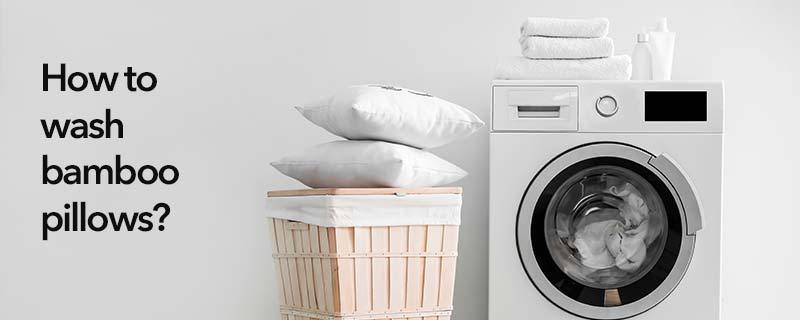








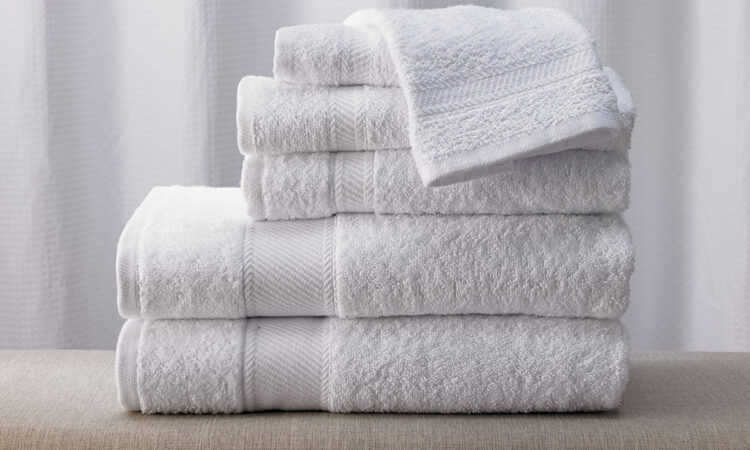



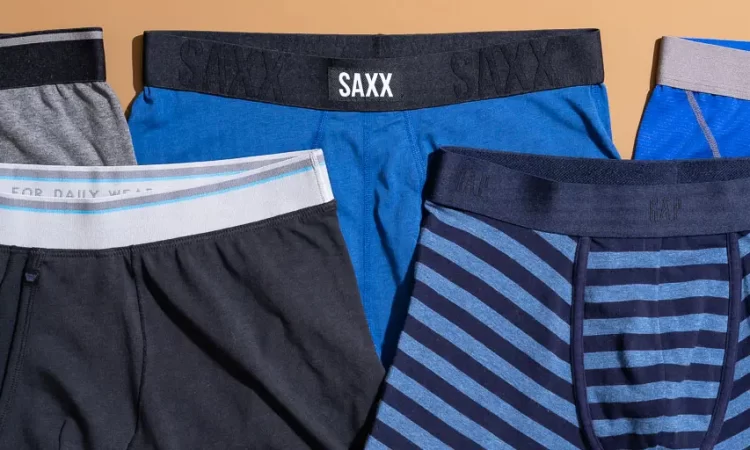

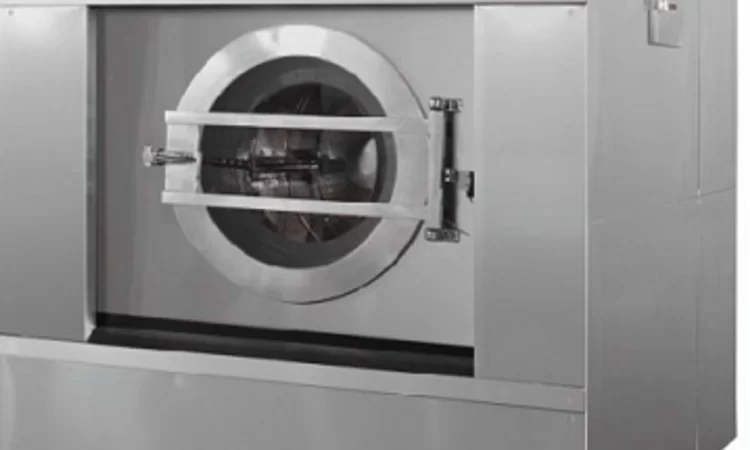
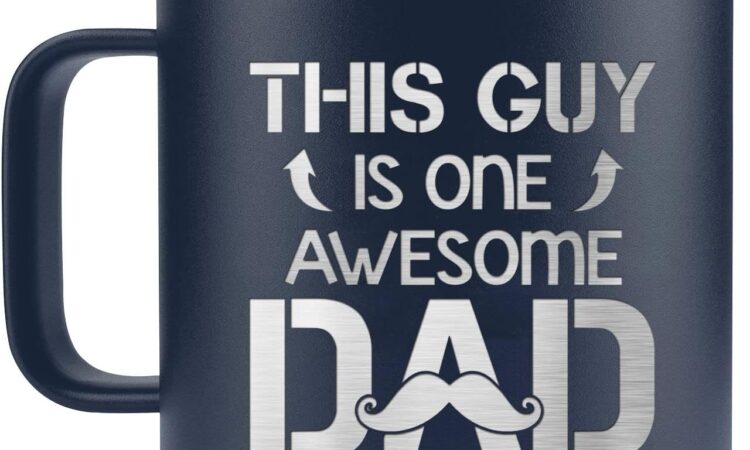

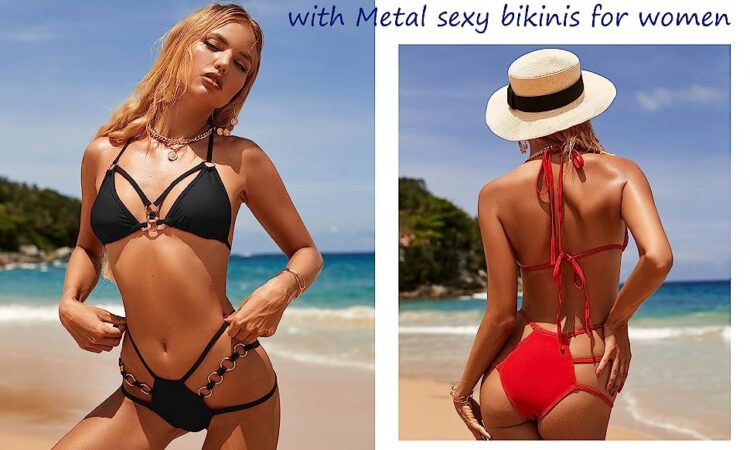



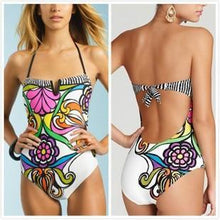

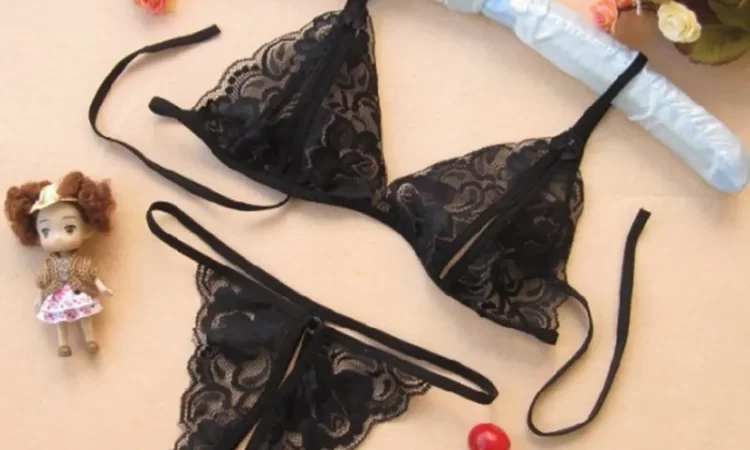


Comments are closed.